Box blight: how to identify, prevent, and treat this common disease
Our expert advice on box blight treatment and prevention will help keep your classic evergreen shrubs looking their best


Struggling with box blight in your backyard? Or maybe you're looking for precautionary measures to prevent it. It's a common gardeners' woe, but luckily there are a few ways to keep your plot free of this fungal disease.
Many people learn how to grow boxwood for their garden, and for good reason. The evergreen shrub is perfect for low hedging that can distinguish different zones without impeding views through the space. It's perfect for topiary, too, because it's dense with small glossy leaves and can be clipped into a whole host of shapes. It'll thrive in sun or shade as well.
Box blight, however, spoils the timeless look of these shrubs by creating unsightly dead patches. But, there are ways to reduce the risk of this disease taking over. And if yours are already infected, there are things you can do to tackle the spread, too.
How to identify box blight
First things first – you'll need to know how to spot box blight if you have it in your garden. The earlier you catch it, the less damage it can do.
A 'dead patch' is the classic look of box blight, explains Graham Rice, garden expert for Amateur Gardening. 'Branches die back and bare patches appear, creating ugly, dead areas in your hedge or topiary. It attacks small topiary and dwarf hedges more than larger specimen plants or tall hedges.
'Box blight can spread quickly, especially in wet weather, and the first sign is leaves turning brown and dropping off,' he adds. Check the stems, too, as black streaks often appear on younger ones.
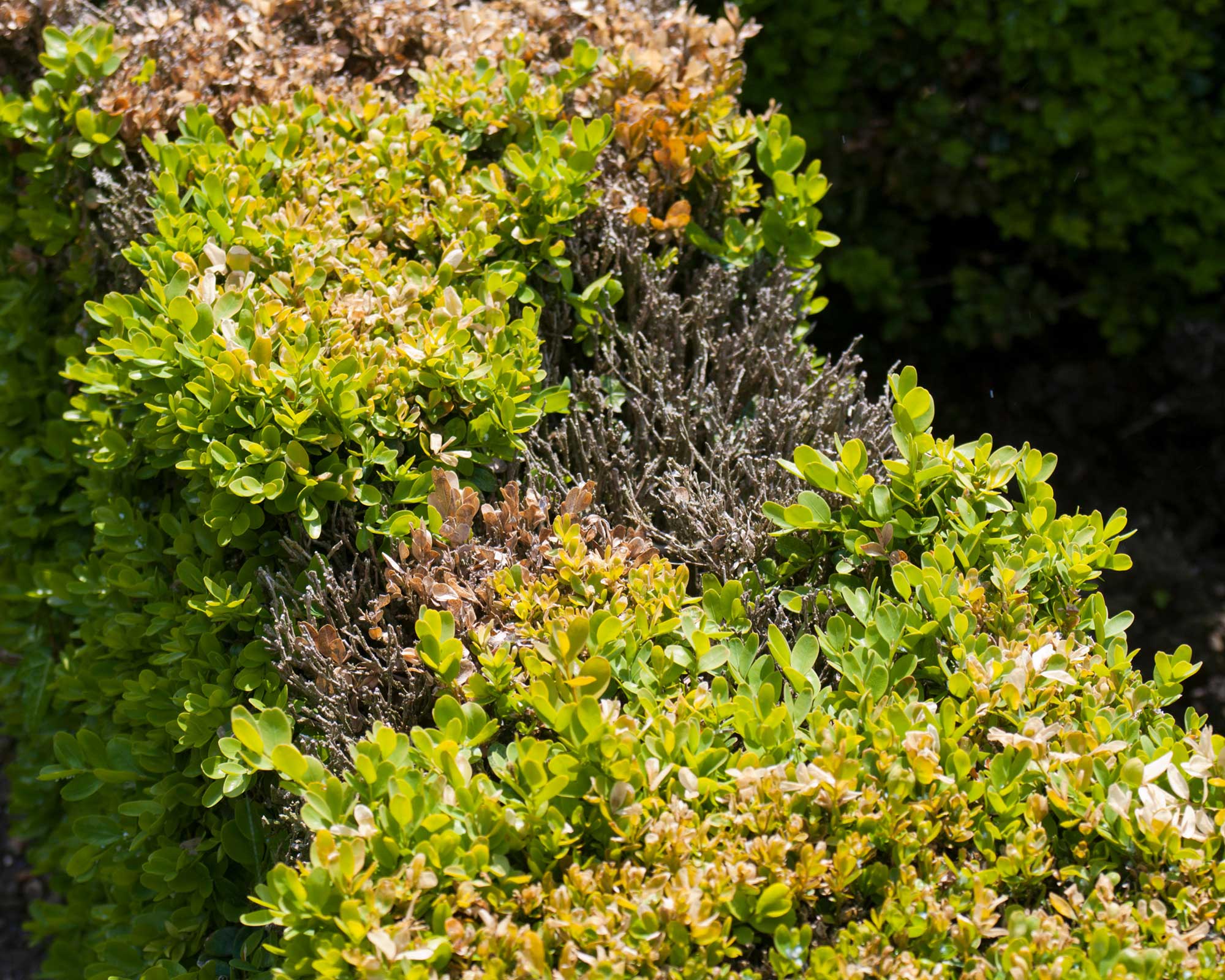
How to prevent box blight
If you're using box for your landscaping with shrubs plans, then it's well worth knowing how to reduce the risk of box blight.
1. Trim your box shrubs at the right time, in the right way
Monty Don revealed some top tips on caring for box hedges and topiary on his website, which will help prevent blight.
Box needs clipping from time to time to keep it in shape. When you do so, check the weather forecast, says Monty – you'll need a few days of dry weather to do this task. The cut leaves and stems are more susceptible to the box blight fungus when the wounds are fresh, he explains. But, dry weather stops the spores of the fungus from being active, and leaves time for the wounds to scar over so they are less vulnerable to the disease. The start of summer is the time to give your box a trim, he adds.
It's also very important to ensure your best garden shears or best hedge trimmer are really sharp and clean. In fact, it's a good idea to clean your tools between pruning box in different areas of the garden – this helps avoid the risk of accidentally spreading any undetected blight. If you're using borrowed tools that have been used in another garden entirely, this step is imperative. And, once you've trimmed your box, remember to clean up the clippings thoroughly (laying a tarpaulin down first will make this easier).
As an extra safety measure, you may wish to apply a preventative fungicide before and after pruning, especially if you have had to deal with box blight in your backyard before. You will usually need to apply it a good few days before you get trimming, and then wait a few days before applying again – check your product's instructions.
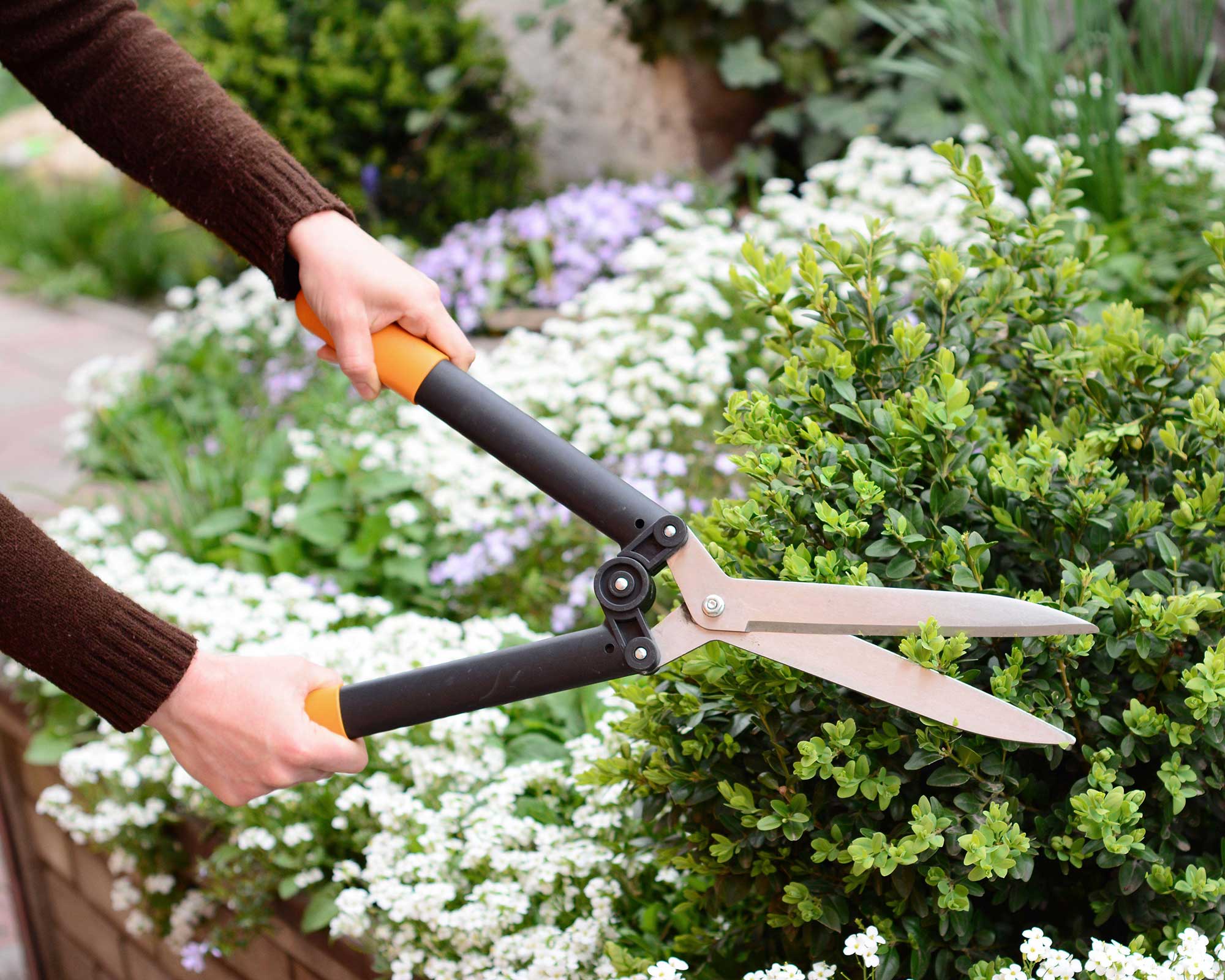
2. Provide plenty of ventilation where possible
Box blight thrives in shady, humid conditions and spreads quickly. So, ensure there is good airflow around your plants – this will help them to dry out quickly after rain. If your box makes up part of your flower bed ideas, this means keeping an eye on nearby perennials, to make sure they don't start crowding your shrubs.
When it comes to watering plants, an irrigation system is best rather than using an 'overhead' approach – this will prevent the leaves from getting wet.
The RHS recommends adding a soft mulch beneath your box. This will prevent rain from splashing up onto the leaves and potentially spreading box blight spores. Refresh the much occasionally, to keep it disease-free.

3. Quarantine new plants
Box blight can enter your garden via new plants. Because of this, the RHS advises isolating any commercially-sourced plants for at least four weeks before planting them, so you can be sure they are disease-free.
As they explain, some nurseries may use fungicides that suppress, but do not kill, the fungus. Quarantining the plants will give you enough time for you to check whether box blight becomes apparent.
Don't forget, you can also learn how to take cuttings from box. If you take them from healthy, blight-free plants in your garden, there will be much less risk than bringing in a new plant from elsewhere.
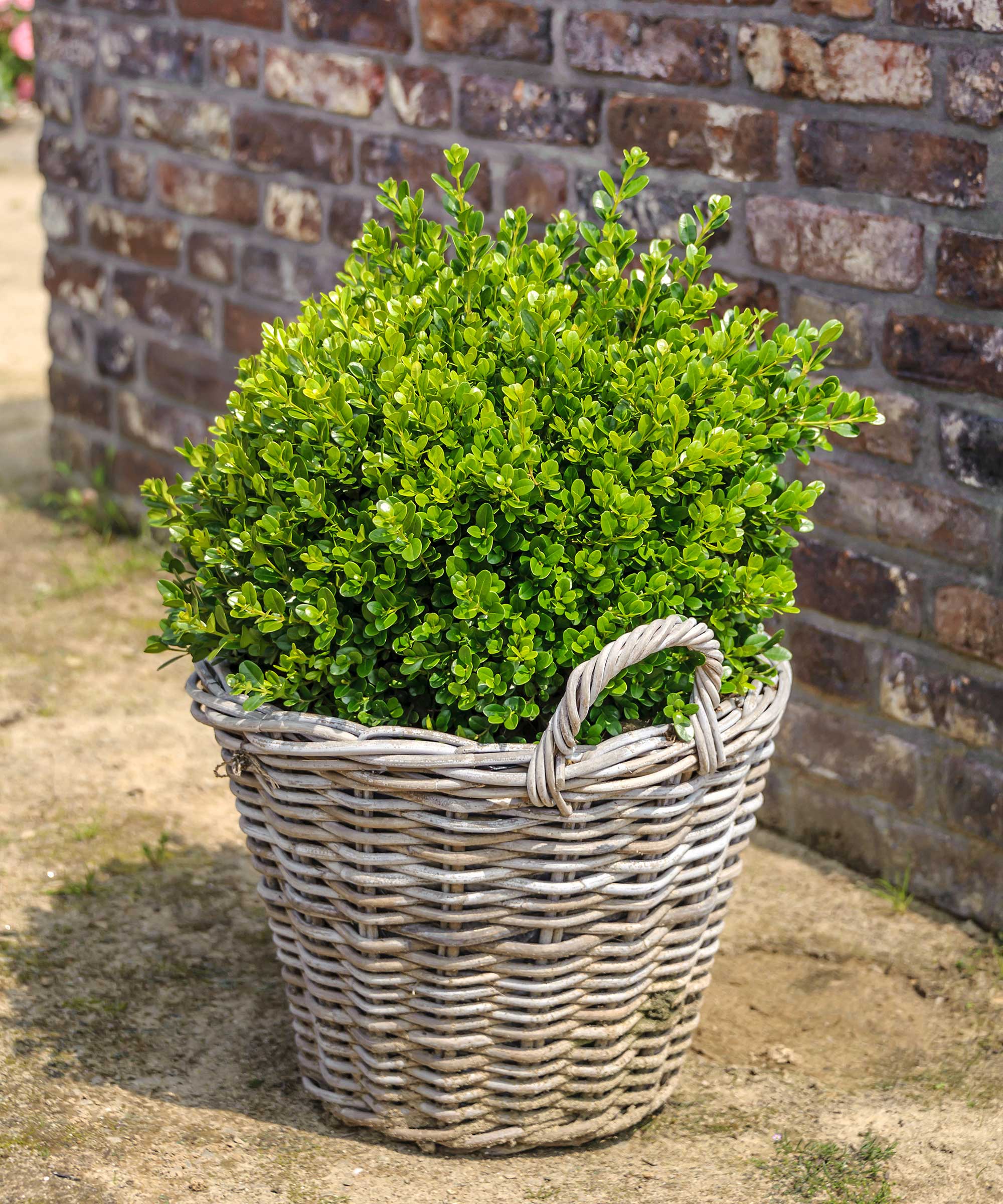
Box blight treatment in 3 simple steps
Already spotted blight? You need these tips on box blight treatment.
1. Cut out infected areas
Box blight needs removing as soon as it's spotted, regardless of the time of year, as long as conditions are dry.
You have a few options. If it's just an isolated area that's affected, you can simply cut this bit out, cleaning your tools well before and after. In more severe cases, you can cut back the shrubs by half, advises Graham Rice. In the worst cases, you can cut the plants right back to ground level, he says. 'Box blight does not infect the roots and new shoots will appear.' John Negus, also a garden expert writing for Amateur Gardening, advises binning or burning the cuttings.
Alternatively, if you don't want the hassle of trying to save your box, or your attempts at cutting out infected areas seem to be in vain, you can simply dig it up for disposal. Just remember that a new box shouldn't be planted in the same place for a good while, as the RHS explains – spores can remain viable in the surroundings for at least six years.
Whichever approach you go for, Graham adds that tools and footwear should be cleaned afterward, to prevent spreading spores around your garden.
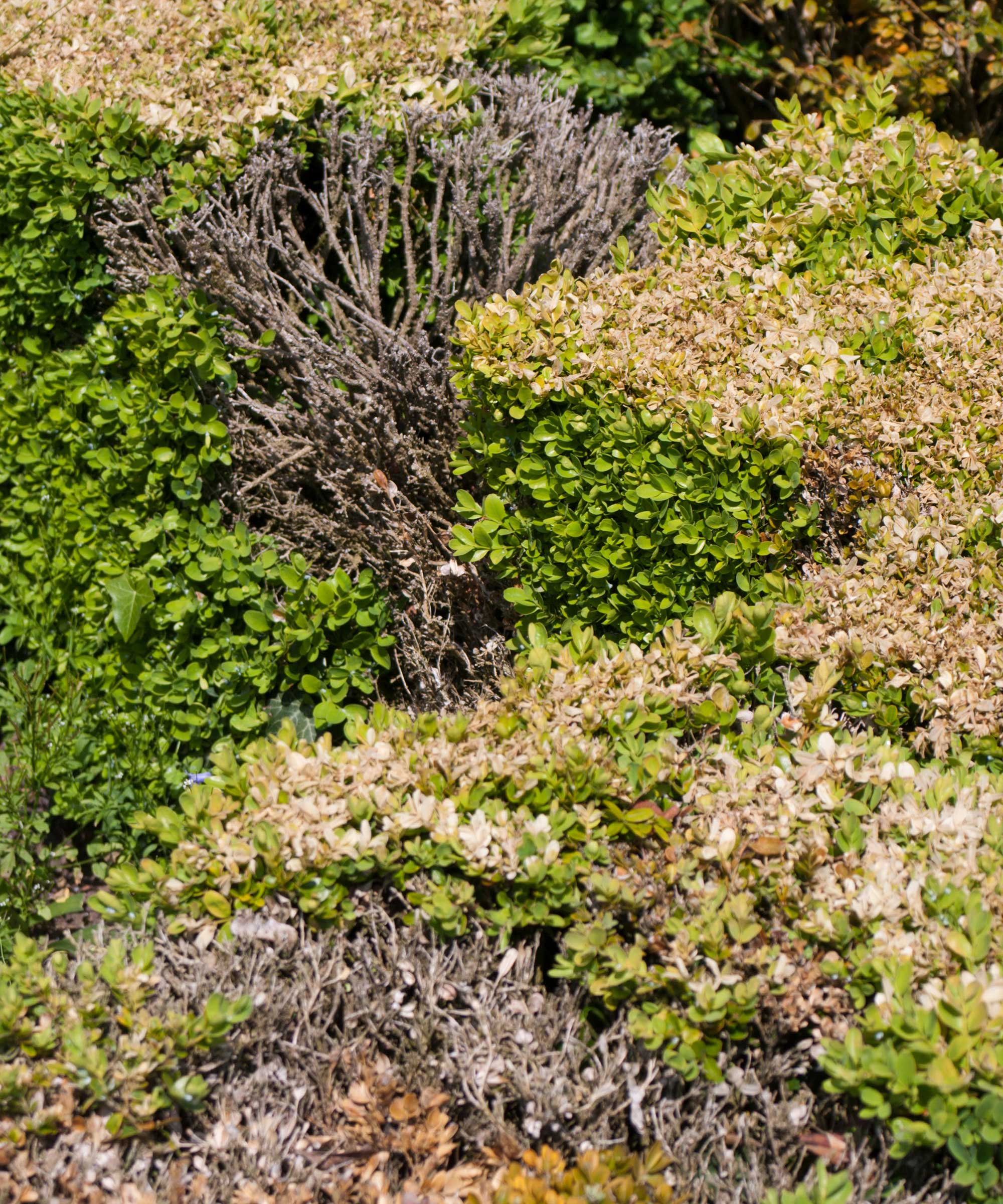
2. Apply a fungicide
As well as cutting back your infected box plants, it's a good idea to apply a fungicide. This can be done both before and after.
The Amateur Gardening experts recommend spraying cut-back plants with a product such as Scotts Fungus Clear Ultra (available on Amazon), which should help stop the spread of the disease.
Fertilizing plants can really help them bounce back, and box is no exception. Use a sulfate of potash monthly from mid-spring until early autumn, as advises John Negus. 'Sprinkle it over the root area and water it in.'
3. Keep an eye out for further infections
As this fungal disease can spread so quickly, it's important to keep an eye on your plants even after box blight treatment. Unfortunately, it often reoccurs in places it was before, so keep vigilant and be prepared to re-treat where necessary.

What are some good alternatives to box?
If you're looking for an alternative to box for your garden, you might be interested in the trial that RHS Garden Wisley carried out.
It resulted in some top recommendations, including the common yew 'Repandens', Pittosporum 'Collaig Silver', Lonicera nitida 'Maigrun' (which has the benefit of leaves that look very similar to those of box), and Berberis darwinii 'Compacta'.
Other shrubs that make good swaps include Euonymus fortunei, Ilex crenata, and Pittosporum 'Golf Ball', as Graham suggests. 'Most succeed better as medium to tall hedges than clipped regularly to keep them dwarf.'
You can find even more options to try in our guide to the best low maintenance hedge plants.
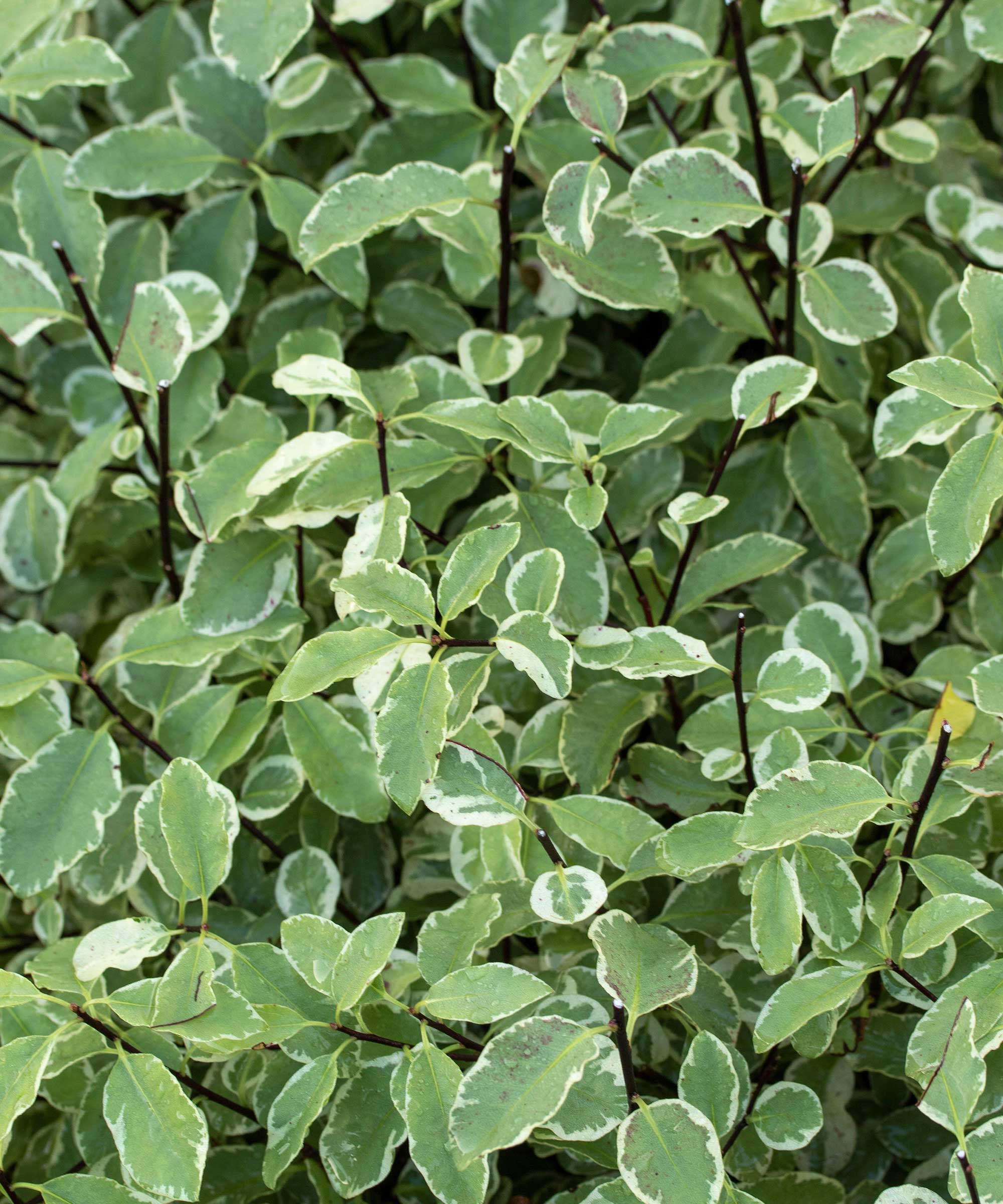

The garden was always a big part of Holly's life growing up, as was the surrounding New Forest where she lived. Her appreciation for the great outdoors has only grown since then. She's been an allotment keeper, a professional gardener, and a botanical illustrator – plants are her passion.
- Sarah WarwickFreelance writer
- Graham RiceFreelance writer
